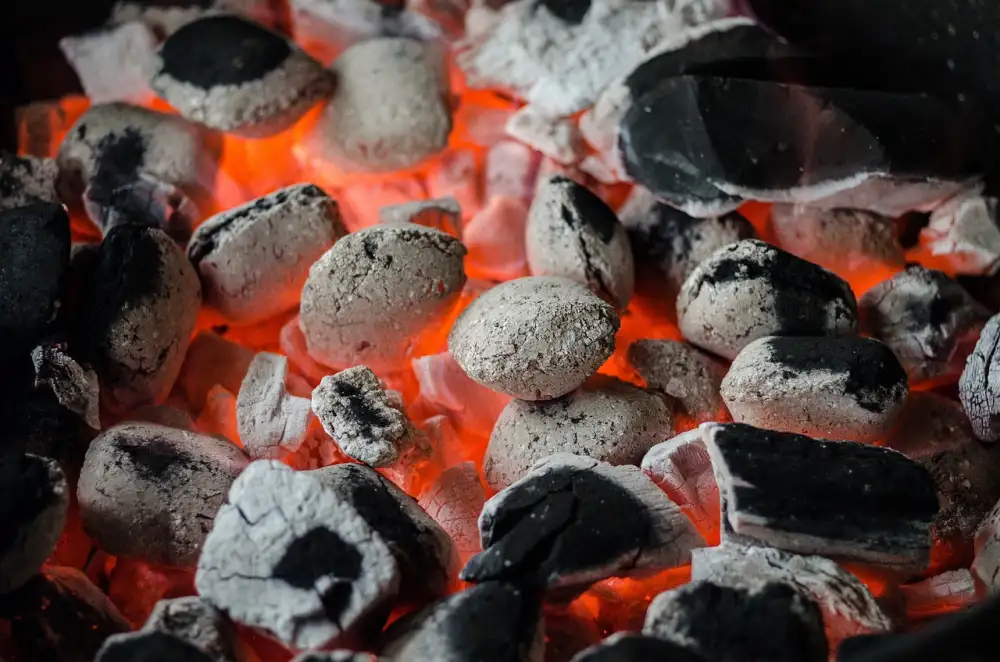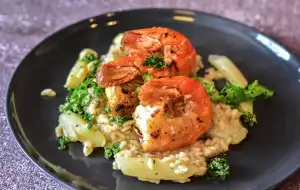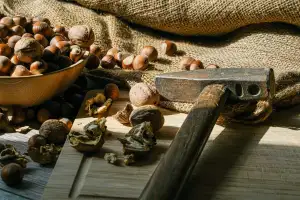Master the Art of Making Carbonara: A Step-by-Step Guide to the Classic Italian Pasta Dish

- Gather the Ingredients: Pasta, Pancetta, Eggs, Parmesan Cheese, Black Pepper
- Cook the Pasta: Boil Water, Add Salt, Cook Al Dente
- Prepare the Pancetta: Cook Until Crispy, Remove from Heat
- Beat the Eggs: Whisk Eggs, Add Parmesan Cheese, Season with Black Pepper
- Combine the Ingredients: Drain Pasta, Add Pancetta, Pour Egg Mixture
- Toss and Coat: Mix Well, Allow the Heat to Cook the Eggs
- Serve and Enjoy: Garnish with Extra Parmesan Cheese and Black Pepper
- Tips and Variations: Add Garlic, Substitute Pancetta with Bacon, Use Spaghetti or Rigatoni
Carbonara is a classic Italian pasta dish that has captured the hearts and taste buds of food enthusiasts around the world. Originating from Rome, this creamy and indulgent dish is a perfect combination of simplicity and flavor. Made with just a few key ingredients, carbonara showcases the richness of eggs, the saltiness of pancetta, and the sharpness of Parmesan cheese. Whether you're a seasoned cook or a beginner in the kitchen, mastering the art of making carbonara will elevate your culinary skills to new heights. So let's dive into this step-by-step guide and unlock the secrets behind creating an authentic and delicious carbonara masterpiece.
Gather the Ingredients: Pasta, Pancetta, Eggs, Parmesan Cheese, Black Pepper
To master the art of making carbonara, it is essential to gather the right ingredients. For this classic Italian pasta dish, you will need pasta, pancetta, eggs, Parmesan cheese, and black pepper. These ingredients come together to create a rich and flavorful dish that will satisfy any food enthusiast. So let's gather these key components and get ready to embark on a culinary journey filled with deliciousness!
Cook the Pasta: Boil Water, Add Salt, Cook Al Dente
Cooking the pasta is a crucial step in mastering the art of making carbonara. Start by bringing a large pot of water to a rolling boil. Add a generous amount of salt to the boiling water - this will season the pasta and enhance its flavor. Carefully add the pasta to the pot, ensuring that it is fully submerged in the water. Cook the pasta according to the package instructions, but be sure to aim for al dente, which means it should still have a slight bite to it. This will ensure that it holds up well when mixed with the other ingredients and doesn't become mushy. Keep an eye on the cooking time and test for doneness by tasting a small piece before draining. Once cooked, drain the pasta thoroughly and set aside while you prepare the other components of this classic Italian dish.
Prepare the Pancetta: Cook Until Crispy, Remove from Heat
To prepare the pancetta, heat a skillet over medium heat. Cut the pancetta into small cubes or thin strips and add them to the hot skillet. Cook until the pancetta turns crispy and golden brown, stirring occasionally to ensure even cooking. Once crispy, remove the pancetta from the heat and transfer it to a plate lined with paper towels to absorb any excess grease. Set aside for later use in the carbonara recipe. The crispy pancetta will add a rich and savory flavor to the dish, complementing the creamy eggs and cheese perfectly.
Beat the Eggs: Whisk Eggs, Add Parmesan Cheese, Season with Black Pepper
To create the creamy and luscious sauce that coats the pasta in Carbonara, you'll need to beat the eggs. In a bowl, whisk together the eggs until they are well combined. Then, add a generous amount of grated Parmesan cheese to the eggs. The cheese adds a rich and savory flavor to the dish. Finally, season the mixture with freshly ground black pepper to give it a subtle kick. Whisk everything together until you have a smooth and velvety mixture ready to be combined with the other ingredients.
Combine the Ingredients: Drain Pasta, Add Pancetta, Pour Egg Mixture
Once the pasta is cooked to al dente, drain it in a colander, reserving a small amount of the cooking water. Return the pasta to the pot and add the crispy pancetta. Give it a gentle toss to distribute the pancetta evenly throughout the pasta.
Next, pour in the beaten egg mixture over the pasta and pancetta. The residual heat from the pasta will cook the eggs, creating a creamy sauce. Make sure to mix everything well, ensuring that each strand of pasta is coated with the rich egg and cheese mixture.
The combination of flavors from the salty pancetta and creamy egg mixture will create a harmonious balance that makes carbonara so irresistible. The velvety texture of the sauce will cling to every bite of pasta, making each mouthful a delight.
Remember not to leave the pasta sitting for too long after adding the eggs as they can continue cooking and turn into scrambled eggs. It's best to serve immediately while it's still hot and fresh.
Now that you have successfully combined all the ingredients, it's time to move on to our final step - tossing and coating.
Toss and Coat: Mix Well, Allow the Heat to Cook the Eggs
Once you have combined the pasta, pancetta, and egg mixture, it's time to toss and coat everything together. Use a pair of tongs or a large spoon to mix well, ensuring that every strand of pasta is coated with the creamy sauce. The residual heat from the cooked pasta and pancetta will gently cook the eggs, creating a velvety texture.
Be careful not to overcook the eggs as they can turn into scrambled eggs rather than a smooth sauce. It's important to keep tossing and mixing continuously for about 1-2 minutes until the sauce thickens slightly. This step is crucial in achieving the perfect consistency for your carbonara.
The heat from the pasta will also help melt the Parmesan cheese, creating a rich and flavorful coating on each strand. The combination of salty pancetta, creamy eggs, and nutty cheese creates a harmonious blend of flavors that make carbonara so irresistible.
Remember to work quickly during this step as you want to ensure that everything is evenly coated before serving. Once you're satisfied with the consistency and all ingredients are well incorporated, it's time to plate up your masterpiece.
Transfer the carbonara onto individual plates or bowls, making sure to distribute any remaining sauce evenly. Garnish with extra Parmesan cheese and a sprinkle of freshly ground black pepper for an added burst of flavor. Now it's time to sit back, relax, and savor every bite of this classic Italian dish – buon appetito!
Serve and Enjoy: Garnish with Extra Parmesan Cheese and Black Pepper
Once you have tossed and coated the pasta with the pancetta and egg mixture, it's time to serve and enjoy your delicious carbonara. To add an extra burst of flavor, garnish your dish with a generous sprinkle of freshly grated Parmesan cheese and a dash of freshly ground black pepper. The Parmesan cheese will melt slightly from the heat of the pasta, creating a creamy and savory coating. The black pepper adds a subtle kick that complements the richness of the dish perfectly. Now, sit back, take a bite, and savor the incredible flavors of this classic Italian pasta dish.
Tips and Variations: Add Garlic, Substitute Pancetta with Bacon, Use Spaghetti or Rigatoni
Tips and Variations: To add an extra layer of flavor to your carbonara, consider adding minced garlic to the pancetta while it cooks. The garlic will infuse the dish with a delicious aroma and enhance the overall taste. Another variation is to substitute pancetta with bacon if you can't find it or prefer its smoky flavor. Just make sure to cook the bacon until crispy before adding it to the pasta. Lastly, while spaghetti is traditionally used for carbonara, you can also try using rigatoni for a different texture and shape. The larger tubes of rigatoni will hold onto the creamy sauce, creating a delightful bite in every mouthful. Experiment with these tips and variations to make your carbonara truly unique and tailored to your taste preferences!
In conclusion, mastering the art of making carbonara is a delightful journey that will reward your taste buds with a creamy and flavorful pasta dish. With just a few simple steps, you can create a delicious carbonara that will impress your family and friends. The combination of perfectly cooked pasta, crispy pancetta, creamy eggs, and tangy Parmesan cheese is truly irresistible. Don't forget to garnish with extra Parmesan cheese and black pepper for an added burst of flavor. Whether you're a seasoned cook or just starting out in the kitchen, this classic Italian recipe is sure to become a favorite. So grab your apron and get ready to savor the rich flavors of carbonara!
Published: 03. 12. 2023
Category: Food



